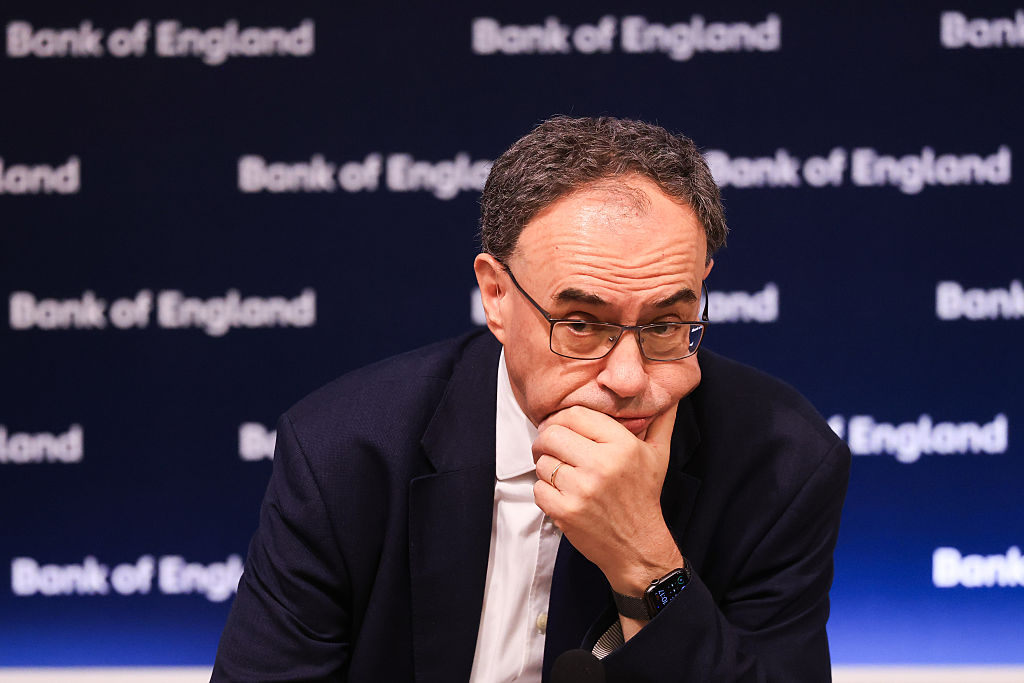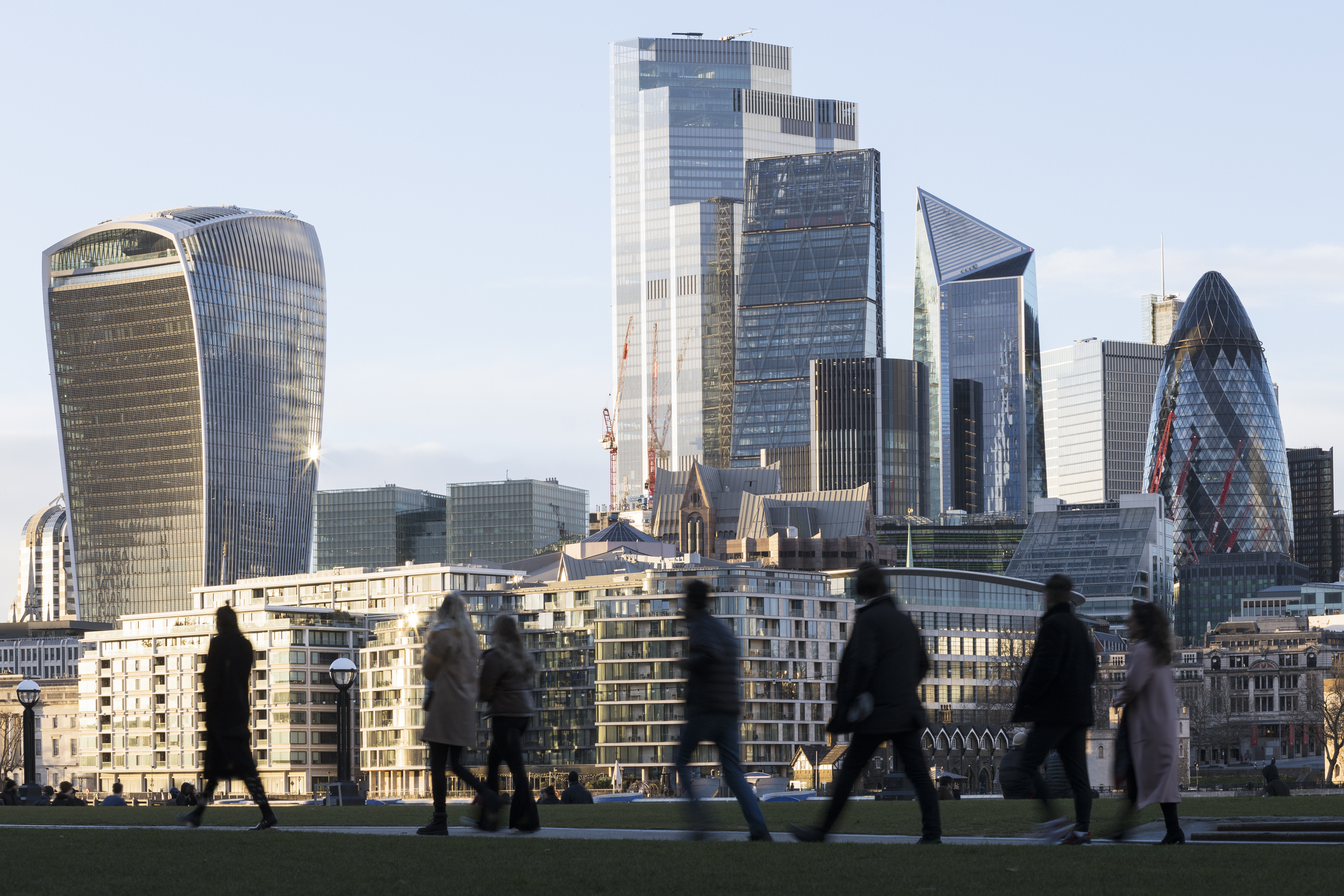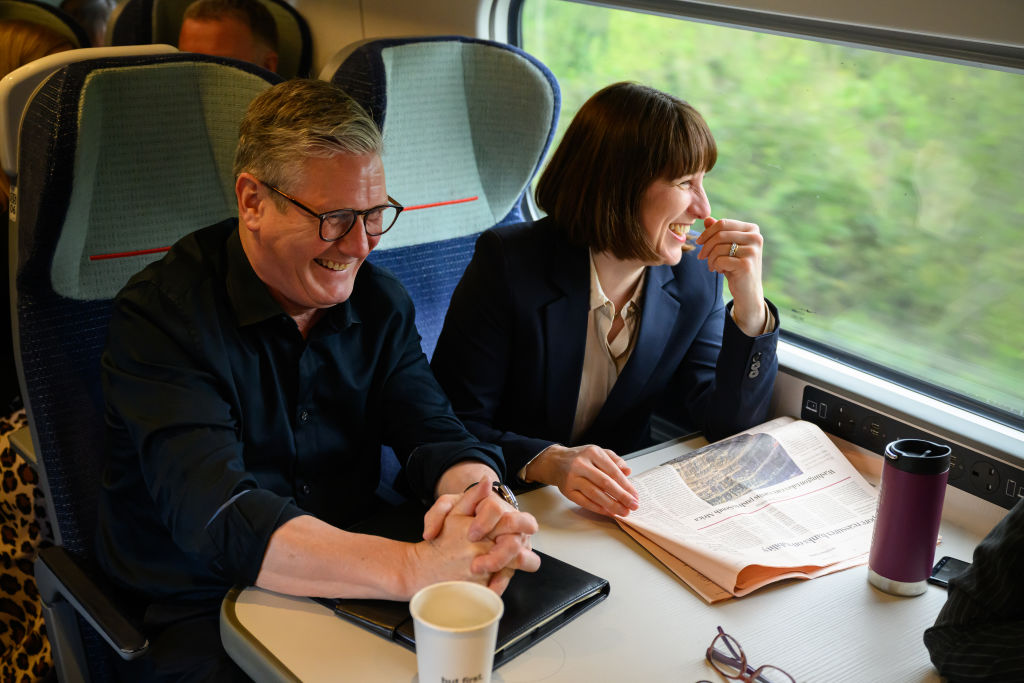When will UK interest rates fall further? Latest Bank of England predictions
HSBC expects the Bank of England (BoE) to cut the base rate in December by 25 basis points, to 3.75%. It had previously expected a hold – here’s what the experts are saying.


Laura Miller
Interest rates are being heavily tipped to come down when the Bank of England (BoE) sets rates in December.
In a research note published this week, HSBC says it now expects the Bank of England (BoE) to cut the base rate in December, by 25 basis points, to 3.75%. It had previously expected a hold, according to the news agency Newspage.
This, HSBC says, is in line with market expectations, which are pricing in a 93% chance of a cut.
MoneyWeek
Subscribe to MoneyWeek today and get your first six magazine issues absolutely FREE

Sign up to Money Morning
Don't miss the latest investment and personal finances news, market analysis, plus money-saving tips with our free twice-daily newsletter
Don't miss the latest investment and personal finances news, market analysis, plus money-saving tips with our free twice-daily newsletter
HSBC expects a 5-4 vote to cut, with governor Andrew Bailey switching his vote from November, noting 'in our view the last thing the sterling rate market needs right now is the BoE adding to a sense of confusion.
'Governor Bailey will be aware of this. Given he’s not made any public comment that pushes back against market pricing, we fall in line with the market and assume a December cut.
'Beyond that, we see another three 25bp Bank Rate cuts in 2026 (at the February, April and July MPC meetings). And we keep our sub-market terminal rate forecast of 3.00%.
'We think that policy will be returned to a neutral stance, and that a 3.50-3.75% range is too high for the UK neutral rate given its sluggish productivity growth.’
Omer Mehmet, managing director at Welling-based Trinity Finance, said while a cut looks likely next week, as HSBC states, the next set of inflation data will be key: "Markets are bracing for the Bank of England to cut next week, with governor Andrew Bailey shifting to a dove.
"But before the rate decision we are due the latest inflation data, which, if it doesn't play ball, still has the potential to throw a spanner in the works."
Economic data
Inflation held steady at 3.8% in September, unchanged from the month before and lower than the 4% expected by the BoE, whose recent forecasts expected September to mark the peak month for inflation.
The Monetary Policy Committee (MPC) narrowly voted to hold UK interest rates at 4% at its 6 November meeting.
While the MPC expects inflation to fall to 3.2% by March 2026, it does not expect inflation to fall to its 2% target level until 2027.
Alongside cooling inflation, the UK economy is weakening. Unemployment hit its highest level since 2021 in the three months to September, according to the latest figures from the Office for National Statistics (ONS), with wage growth slowing to 4.6% during the same period (down from 4.7% in the three months to August).
That data “should give the MPC more confidence to cut Bank Rate further by year-end,” said Sanjay Raja, chief UK economist at Deutsche Bank. “There’s more slack building in the labour market – and perhaps more so than assumed by the MPC in its November projections.”
A tough tightrope for the Bank of England
The Bank of England has a tough tightrope to walk when deciding the timing and extent of future rate cuts. It needs to support growth while simultaneously bringing inflation under control. Cutting rates could boost the economy, but it could also allow inflation to rise further.
Increasingly, there are signs that the MPC is divided on how to balance these objectives. At November’s meeting, the decision to hold rates at 4% was carried by a narrow 5-4 majority, with Bailey apparently holding the deciding vote between doves who favour interest rate cuts to boost the economy, and hawks who favour higher rates in order to control inflation.
Robert Wood, chief UK economist at Pantheon Macroeconomics, views the MPC’s latest decision as “the prudent course of action… in the face of inflation nearly double its target, elevated inflation expectations, and a major Budget due ahead of its next meeting”.
The Autumn Budget is the great unknown as far as the MPC is concerned. Last year’s Budget included measures such as an increase to employer’s National Insurance that many economists viewed as inflationary.
This time around, it looks as though Reeves is set to increase taxes, potentially breaching manifesto commitments in doing so.
While tax rises would be unpopular and could stifle the economic growth the chancellor is seeking, they might also prove disinflationary – which would strengthen the hand of doves on the MPC pushing for interest rate cuts.
Either way, the MPC – which has so far stressed caution in its approach to lowering interest rates – ought to be much better-informed by the time of its December meeting than it was in November.
“Rate-setters will have two labour market and inflation releases by December,” said Wood, prior to the first of these labour market releases on 11 November. “We are comfortable sticking to our call for a December rate cut,” he added, though he conceded that he is less confident about what the MPC’s approach will be after then.
What do falling interest rates mean for mortgages?
A drop in interest rates generally translates into cheaper mortgages. Mortgage rates are already falling in anticipation of another rate cut.
Moneyfacts UK Mortgage Trends Treasury Report data reveals the average two- and five-year fixed mortgage rates fell month-on-month in December by notable margins, now both at their lowest levels since the start of September 2022, before the ‘mini-Budget’.
Average mortgage rates on two- and five-year fixed deals fell by 0.08% and 0.10% – to 4.86% and 4.91% respectively – between 8 November and 8 December. It is the first time the average five-year fixed rate has dropped below 5% since May 2023.
This is significantly cheaper than this time two years ago. At its peak in August 2023, the average two-year rate was 6.85% and the average five-year rate was 6.37%, according to Moneyfacts.
This is good news for those coming to the end of a two-year fix. A drop in average mortgage rates from 6.07% to 4.99% roughly equates to a £258 drop in monthly repayments for someone with £400,000 of borrowing. These calculations assume a total mortgage term of 25 years, and are based on figures we plugged into MoneyHelper’s mortgage calculator.
Things don’t look so good for those coming to the end of a relatively cheap five-year deal agreed before rates started rising in 2021. Their monthly repayments are likely to jump when they refinance.
Around 1.6 million fixed-rate deals are due to come to an end in 2025, according to trade association UK Finance.
However Shaun Sturgess, director at Swansea-based Sturgess Mortgage Solutions, said: "2026 is shaping up to be a far more active year than 2025, with lower mortgage rates powering the property market and boosting sentiment among borrowers."
What do falling interest rates mean for savings?
Some of the top savings deals have disappeared over the past 18 months, first in anticipation of base rate cuts and then in response to them. A combination of rate cuts and rising inflation means savers are being squeezed on both sides when looking for inflation-beating savings accounts.
The Moneyfacts Average Savings rate fell to 3.39% on 8 December from 3.41% on 7 November, and it is now at its lowest level in more than two years. The average savings rate is also currently below the rate of inflation (3.8%).
Dig deeper into the different types of account on offer – easy access, notice and fixed savings accounts and cash ISAs – all are now paying less than 4% on average. In fact, only around one in four accounts pays better than 4%, which is also the current level of the Bank of England Base Rate.
“It means money left sitting in low-paying accounts is losing value in real terms. It is essential that savers take the initiative and shop around to secure the best return on their hard-earned savings,” said Adam French, head of news at Moneyfacts.
If you are happy to lock up your cash for a year or so, it could make sense to fix your savings to get better rates. The best one year fixed rate savings account is, as on 8 December, Investec Bank 1-Year fixed rate saver providing an interest rate of 4.5% AER. It requires a minimum deposit of £5,000 and you can save up to £250,000.
See our round-up of the best easy-access rates, one-year savings accounts, regular saver accounts and cash ISAs for the latest deals on cash savings.
Those with a longer horizon ahead of them could consider investing some of their savings. A diversified portfolio of investments typically outperforms cash over the long run, but a minimum horizon of five years is generally recommended. We take a closer look in our guide on saving versus investing.
What do falling interest rates mean for annuities?
Annuities are a way of turning your pension pot into a guaranteed income for life. You buy an annuity by using some or all of your pension savings.
How much income you get in exchange for your pot depends on annuity rates. These are linked to UK government bond yields, which are in turn linked to the Bank of England base rate. A cut in interest rates generally translates into a fall in annuity rates.
As interest rates rose from 2022, the annuity market experienced a period of unprecedented strength. At the moment, annuity incomes are hovering near all-time highs.
“Those considering an annuity can still take advantage of the current competitive rate environment,” said Nick Flynn, retirement income director at Canada Life UK following the latest MPC meeting.
Recent data from Hargreaves Lansdown’s annuity search engine shows a 65-year-old with a £100,000 pension can get up to £7,793 per year from a single-life level annuity with a five-year guarantee.
These incomes have led to a revival in a market that was once very much relegated to the sidelines, with last year proving a bumper year for sales.
Get the latest financial news, insights and expert analysis from our award-winning MoneyWeek team, to help you understand what really matters when it comes to your finances.

Dan is a financial journalist who, prior to joining MoneyWeek, spent five years writing for OPTO, an investment magazine focused on growth and technology stocks, ETFs and thematic investing.
Before becoming a writer, Dan spent six years working in talent acquisition in the tech sector, including for credit scoring start-up ClearScore where he first developed an interest in personal finance.
Dan studied Social Anthropology and Management at Sidney Sussex College and the Judge Business School, Cambridge University. Outside finance, he also enjoys travel writing, and has edited two published travel books.
-
 Why Scotland's proposed government bonds are a terrible investment
Why Scotland's proposed government bonds are a terrible investmentOpinion Politicians in Scotland pushing for “kilts” think it will strengthen the case for independence and boost financial credibility. It's more likely to backfire
-
 How have central banks evolved in the last century – and are they still fit for purpose?
How have central banks evolved in the last century – and are they still fit for purpose?The rise to power and dominance of the central banks has been a key theme in MoneyWeek in its 25 years. Has their rule been benign?
-
 UK to have highest inflation among advanced economies this year and next, says IMF
UK to have highest inflation among advanced economies this year and next, says IMFThe International Monetary Fund (IMF) says it expects inflation to remain high in the UK, while lowering economic growth forecasts for 2026.
-
 Is Britain heading for a big debt crisis?
Is Britain heading for a big debt crisis?Opinion Things are not yet as bad as some reports have claimed. But they sure aren’t rosy either, says Julian Jessop
-
 'Britain is on the road to nowhere under Labour'
'Britain is on the road to nowhere under Labour'Opinion Britain's economy will shake off its torpor and grow robustly, but not under Keir Starmer's leadership, says Max King
-
 'Governments are launching an assault on the independence of central banks'
'Governments are launching an assault on the independence of central banks'Opinion Say goodbye to the era of central bank orthodoxy and hello to the new era of central bank dependency, says Jeremy McKeown
-
 Why investors can no longer trust traditional statistical indicators
Why investors can no longer trust traditional statistical indicatorsOpinion The statistical indicators and data investors have relied on for decades are no longer fit for purpose. It's time to move on, says Helen Thomas
-
 Live: Bank of England holds UK interest rates at 4.5%
Live: Bank of England holds UK interest rates at 4.5%The Bank of England voted to hold UK interest rates at their current level of 4.5% in March, as widely anticipated, after inflation rose to 3% in January

